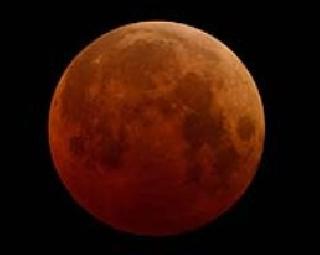
A file photo.
PARIS (AFP): Weather permitting, skygazers in northern America and Europe are in for a treat in the early morning hours of Tuesday, when the first total lunar eclipse in almost three years is poised to turn the Moon pink, coppery or even a blood red.
Coinciding eerily with the northern hemisphere's mid-winter solstice, the eclipse will happen because the Sun, the Earth and its satellite are directly aligned, and the Moon swings into the cone of shadow cast by its mother planet.
The Moon does not become invisible, though, as there is still residual light that is deflected towards it by our atmosphere.
Most of this refracted light is in the red part of the spectrum and as a result the Moon, seen from Earth, turns a reddish, coppery or orange hue, sometimes even brownish.
"The entire event is visible from North America, Greenland and Iceland," says NASA's veteran eclipse expert Fred Espenak, pointing out that for observers in the western US and Canada, the show will start on Monday evening rather than Tuesday morning.
"Western Europe will see the beginning stages of the eclipse before moonset, while western Asia will get the later stages after moonrise."
The eclipse runs for three and a half hours, from 0633 GMT to 1001 GMT, although the stage of total eclipse -- when the Moon heads into the "umbra" cast by the Earth -- lasts from 0741 to 0853 GMT.
Two factors affect an eclipse's colour and brightness, says the US astronomy magazine Sky & Telescope.
 Previous Article
Previous Article Next Article
Next Article













The Indian Air Force, in its flight trials evaluation report submitted before the Defence Ministry l..
view articleAn insight into the Medium Multi-Role Combat Aircraft competition...
view articleSky enthusiasts can now spot the International Space Station (ISS) commanded by Indian-American astr..
view article